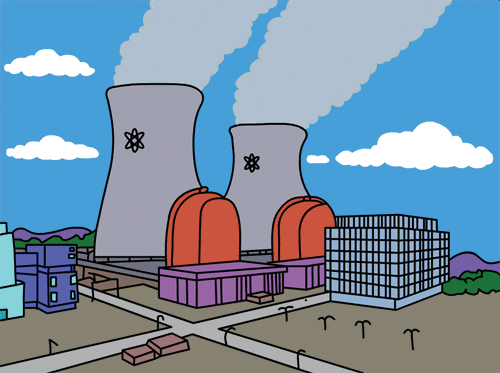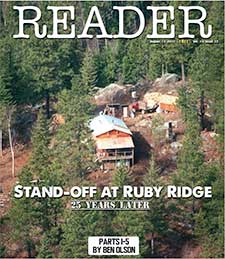Mad about Science: Hidden engineering – nuclear reactors
By Brenden Bobby
Reader Columnist
There’s a lot of work that goes into designing and building a nuclear power plant. It’s a relatively clean source of energy, when compared to oil or coal, but it also carries the potential risks of huge disaster if improperly designed, poorly staffed or badly built. Nuclear reactor disasters are a fairly rare occurrence — especially when comparing them to incidents like oil spills, which can occur thousands of times every year throughout the U.S. alone.
A tremendous amount of forethought and safety precautions go into the design of a nuclear reactor for exactly this reason. Huge events like the Chernobyl disaster in 1986, the Three Mile Island accident in 1979 or the Fukushima nuclear meltdown in 2011 make global headlines and stick with us as long-term reminders for the potential dangers of nuclear energy.
Oil can do serious damage to the environment when accidents happen, but it’s generally much easier to clean up than a radioactive disaster like Chernobyl, the surroundings which will take thousands of years to be potentially safe for humans to inhabit.
Designing these facilities is a thoughtful process that follows the mantra: “An ounce of prevention is worth a pound of cure.”
Nuclear fission is a complicated science. People spend a lot of time and money to learn how to work with nuclear technology safely. Explaining fission thoroughly here would take a very long time, so you’ll have to forgive me for taking some shortcuts in explaining how it works.
In a nuclear reactor, we use unstable particles — that is, atoms that are “heavy,” or have more neutrons than protons in their nucleus. These atoms will spontaneously shed part of its mass and become a new element while releasing a lot of energy at the same time. This release of energy and ejected particles can react with other nearby atoms and strip it of electrons.
This is essentially how we deal with cancer using radiation therapy, by using a targeted release of radioactive energy to kill cancer cells — these cells will die more quickly than our healthy cells in this manner, but prolonged exposure to radioactivity can break down our DNA and cause cancerous mutations in otherwise healthy cells.
This is also useful when you’re trying to heat up other matter. In the case of a nuclear reactor, you’re using these reactions in a very controlled environment to heat water into steam, which then pushes a turbine; but steam is a destructive force, and we need to be able to control it and collect it without causing an immense pressure buildup that would damage our turbines or worse yet: our reactor.
The process to control water and steam utilizes the water cycle, and it’s why nuclear reactors are often built near large bodies of water. Steam generated by the release of heat from the reactor travels through a turbine, turning it to generate electricity.
The steam travels into a condenser, which is an enclosure that has cool water from a nearby source pumped through pipes to lower the temperature and causes the steam to condense back into a liquid form to be reused and cycled back through the system to become steam and turn the turbine.
The most important thing to note here is that the water used in the turbine and the water used to cool the steam are separate to avoid radioactive contamination.
This process is scaled up with the design of cooling towers. Cooling towers are those large, somewhat cylindrically shaped towers that are an iconic staple of most nuclear reactors. They have an unusual shape for such a large object, but it’s very intentionally designed this way.
The bottom of the cooling tower is open so that outside air is able to flow in and up the tower. This is the first step of cooling. The next is to maximize the amount of surface area the cooling water contacts to cool down — this is done by adding “fill” to an area near the bottom of the tower. This is a plastic mesh that adds a lot of surface area for the water, similar to the radiator at the front of your car for airflow.
Here is where things get a little squirrely. The hot water transfers its heat to the air flowing in through the intakes, which makes the hot air buoyant and causes it to rise. Some of the water also evaporates during this process and rises with the hot air escaping the tower. This creates a draft which then draws in more cool air through the intakes along the bottom of the tower and essentially allows the structure to self-regulate.
The “smoke” you see emerging from the top of the tower is water vapor that was caught in the stream of warm air meeting the cool air at the top of the stack and condensing into water vapor — essentially, the tower is creating clouds. Since this water was separated from the water that interacts with the radioactive material within the reactor, it is completely safe and no different from water vapor you’d find anywhere else, including the sky.
You might be wondering: Why bother doing all of this at all and why not just vent the excess water into the atmosphere to let nature do its thing?
That would be an extremely wasteful process, and in building cooling towers such as this, engineers are able to recoup much of the water used during the entire process. It’s a large initial investment that reduces the amount of maintenance done on pumps and piping later on in the reactor’s life. If it’s more efficient, why not do it this way?
Stay curious, 7B.











 Coming up this week! Don’t miss Live Music, the Summer Sampler, the Art Party, Monarch Grind, the Sandpoint Renaissance Faire, and more! See the full list of events in the
Coming up this week! Don’t miss Live Music, the Summer Sampler, the Art Party, Monarch Grind, the Sandpoint Renaissance Faire, and more! See the full list of events in the 